Make sure you don’t take a ‘3 nights, 4 days’ package as that will never get you to experience the true beauty and grandeur of the place, writes Navneet Sahni, writes Navneet Sahni
Kashmir – a name famous the world over for its natural beauty has not really been explored beyond the usual Srinagar, Gulmarg, Pahalgam and Sonamarg. Many people ask me what else is there to see in Kashmir apart from the above mentioned places and I tell them that there are so many more places that even with repeated trips you cannot visit all what this stunning place has to offer. To start with I highly recommend that one should travel to Srinagar from Jammu via the Mughal road – this was the route the Mughal Emperors took to travel to their beloved Kashmir. This route goes through the border towns of Akhnoor, Poonch, Baflaiz the scenic Peer Ki Gali and through the apple town of Shopian. A sarai (resting place) at Shadmarag is still witness to the grandeur of Mughal carvans passing through this road. Definitely a much more scenic route that the NH44 which presently is used as the main route and much shorter too. Though the highest point is at Peer Ki Gali, which is about 11500 ft.
Whatever way you visit Kashmir just be sure that you are not on one of those 3 nights 4 days package trips as then you don’t really see Kashmir in all its beauty and grandeur. Here is my pick on some of the most stunning places. I am sure some of you may have heard of some places but may be not all. Believe me you will not regret visiting some of these places – carry good hiking footwear, a good camera and be open to a little bit of roughing out. You will be rewarded many times over.
AHARBAL FALLS & KAUSARNAG LAKE
Aharbal lies in the Kulgam district of Kashmir. This is one of the pristine areas of the beautiful Pir Panjal range of the Kashmir Himalayas. Located just 50 kms from Srinagar this is one of the must-visit places of South Kashmir (very close to the apple orchard area of Shopian). The thickly forested alpine valley is covered with pine and fir trees within the Pir Panjal Mountains make it a beautiful and refreshing place to visit – especially with a nice picnic hamper. Located on the Veshu River- a tributary of the Jehlum River – the 2260 metres mesmerizing high falls are known as the ‘Niagara Falls of Kashmir’. The roar of fast flowing white water gushes and falls about 26 metres to form a deep pool.
Aharbal is a base for adventure tourism. The Veshu River is stocked with trout and is one of the best places for angling in Kashmir. Apart from the falls and fishing, this is a fantastic area for short treks. The alpine meadow of Kungwatan lies at the halfway point of the two-day trek to the high-altitude Konsernag Lake, which is the source of the Veshu River. The lake is situated at an elevation of 3962 metres (13,000 ft) above sea level. The lake feature itself is rather special as it is an oligotrophic lake or water body which has a relatively low productivity due to the low nutrient content in the lake. The waters of these lakes are usually quite clear due to the limited growth of algae in the lake – hence of high-drinking quality. Surrounded by snow covered mountains, this is one of the most beautiful places in all of Kashmir valley.
DAKSUM & SINTHANTOP
Just 3 hours from Srinagar past Anantnag, lies another of Kashmir’s hidden gems – Daksum. A beautiful picnic spot, situated at an altitude of 2438 metres above sea level. This too is a trekker’s paradise covered with thick coniferous forests, fast gushing streams and grassy meadows. The gushing Bringi River adds to the charm of this stunning place – as well as being an excellent place for trout fishing. The general area is known for plenty of camping spots and from Daksum the trail rises fairly steeply to the Sinthan Pass located at the height of 3748 metres. With a few hotels available, this is a place which should be on the bucket list of every outdoor enthusiast visiting Kashmir.
The Sinthan Pass (Top) is midway on the newly opened Anantnag-Kishtwar road which offers some awesome views of the area. At the top of the pass you get a 360 degree view of snow-covered mountains and peaks.
On the way to Daksum you can stop at a lesser known Mughal Garden – Achabal. This was the pleasure garden of the Mughal Empress Nur Jehan. Built between 162–1640 AD, the garden’s design is a typical Mughal interpretation of the traditional Persian chahar bagh (four gardens). The chahar bagh takes its inspiration from the Quranic description of heaven as having four rivers of wine, honey, milk, and water. Achabal is a visual treat for the eyes as it is adorned with one of the best Mughal Gardens in India. As with other Kashmiri gardens, Achabal is located on a hillside, with its water source at the top. The typical chahar bagh design had to be altered to fit the site’s topography, as the source of water shifted from the traditional center of the square garden to the highest point of the garden.
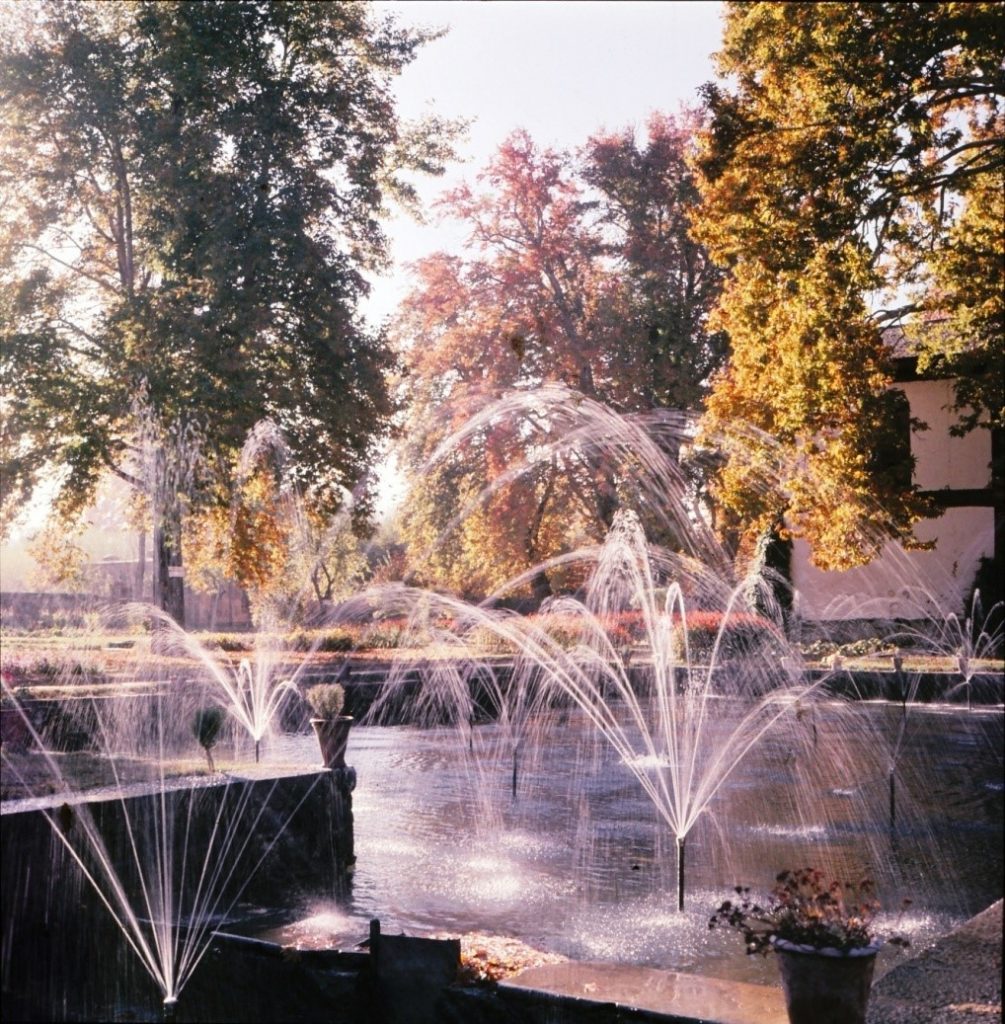 Nearby is Kokernag is a garden made by the local floriculture department. Koker means ‘fowl’ and nag means ‘serpent’. The spring gushes out of the base of a thickly wooded hill from where it divides into channels, which resembles to the claw-foot of a hen, hence its name. Kokernag is known for its spring that bubbles at seven places at the foothill and flows in many directions producing an image of claws of a rooster, a trait to which the garden owes its name. Several Chinars make the garden a great place for a relaxing picnic. Several families come to the garden around spring time for a day out. The water of Kokernag in Kashmir is believed to have medicinal and digestive properties. Owing to these properties only the spring is also known as Papashudan Nagor – the sin-cleansing spring!
Nearby is Kokernag is a garden made by the local floriculture department. Koker means ‘fowl’ and nag means ‘serpent’. The spring gushes out of the base of a thickly wooded hill from where it divides into channels, which resembles to the claw-foot of a hen, hence its name. Kokernag is known for its spring that bubbles at seven places at the foothill and flows in many directions producing an image of claws of a rooster, a trait to which the garden owes its name. Several Chinars make the garden a great place for a relaxing picnic. Several families come to the garden around spring time for a day out. The water of Kokernag in Kashmir is believed to have medicinal and digestive properties. Owing to these properties only the spring is also known as Papashudan Nagor – the sin-cleansing spring!
Another beautiful garden in the near vicinity is Verinag – named after Nila Nag, the son of the wise saint, Kashyap Rishi, who reclaimed the Kashmir valley. This is also the birth place of the mighty Jehlum River. The original shape of this spring was changed by the Emperor Jahangir into the traditional Mughal octagonal. Very picturesque in its settings and surrounded by tall Pine trees, Jahangir planted many Chinars and laid out the garden with several varieties of colorful flowers and the water duct going through the flower beds.
Thus this entire circuit covering Daksum, Sinthan and these beautiful gardens can be a beautiful 2 or 3 night trip.
DOODHPATHRI
Doodhpathri is a beautiful meadow with emerald grass that looks like a green carpet. Just 45 kms from Srinagar, it can be an excellent day trip. The name ‘doodpathri’ means Valley of Milk and it’s a beautiful place with grass carpet-like meadows. A flowing river ripples with the soft wind passing through the pine trees of the enclosures of the valley. Carry your picnic basket along and have an excellent outing. Doodhpathri is a recent inclusion in the Jammu Kashmir tourist map – the reason that the place is not overcrowded with tourists.
WATLAB (Wular Lake) – LOLAB VALLEY
According to some, this part of the valley is absolutely the real Kashmir. Watlab is situated close to Sopore – Bandipore – just an hour & half drive away. The hinterland of the valley unfolds in front of you as you come across paddy fields. Apart from the untamed beauty and the panoramic scenes of one of the largest fresh water lake in Asia – Wular, Watlab in Kashmir is famous for its hilltop Muslim shrine. The shrine was built in the memory of Baba Shukurddin, a Muslim mystic. The stunning Mt. Harmukh (highest peak in the valley) can clearly be seen from here.
The views from the meadow are stunning and with extensive marshes of emergent and floating vegetation, particularly water chestnut, provide an important source of revenue for the State Government and fodder for domestic livestock. Apart from the Jehlum River, which traverses the lake, there are four smaller rivers which feed the lake. The lake supports an important fishing industry and is a valuable source of water for irrigation and domestic use. The area is important for wintering, staging and breeding birds and is a Ramsar site. A very important place for migratory birds visiting from as far as Siberia.
The extreme northern part of the Kashmir valley in Kupwara lies the beautiful Lolab Valley – Land of Love & Beauty. The Lolab Valley is home to many ancient springs, and is covered with dense forests of pine and fir. Fruit trees such as apple, cherry, peach, apricot and walnut are common in the valley, which is known as ‘the fruit bowl of Jammu and Kashmir’. The valley has several natural landmarks and tourist spots, such as the caves of Kalaroos and one of the main places is Chandigam – an absolutely must visit. Thick pine and fir forests form a significant part of the surrounding mountains. There are small lakes and pristine meadows nestled within the mountains and hills. Numerous springs and nameless waterfalls come down these mountains. And beyond the horizon you can see the snow-capped Pir Panjal ranges. Lolab Valley is untouched and pristine. Tourism infrastructure unfortunately is still very basic here – call it a boon or a bane!!!
GUREZ
Ultimate adventure destination to the north of Kashmir, Gurez, is a gateway to the famous silk route across central Asia. The pyramid shaped peak named after famous Kashmiri poetess Habba Khatoon is most fascinating peak of Kashmir. The emperor Yousuf Shah Chak who is said to be a Dard from Gilgit entered into Kashmir through Gurez. It is believed that when emperor was imprisoned by the King Akbar, his beloved Habba Khafton used to wander near the peak to look for her lover.
Due to its strategic location and the proximity to the Line of Control, Gurez has not come into the limelight. The day tourism infrastructure becomes available, mark my words, Gurez will become one of the most important and sought after destinations of Kashmir. For those who have been to Sonamarg, Pahalgam and Gulmarg – all I can say is that these three do not even close to this most beautiful part of Kashmir. The roar of mighty Kishan-Ganga River flowing across the valley against the back drop of snow-covered mountains, makes it picture postcard perfect.
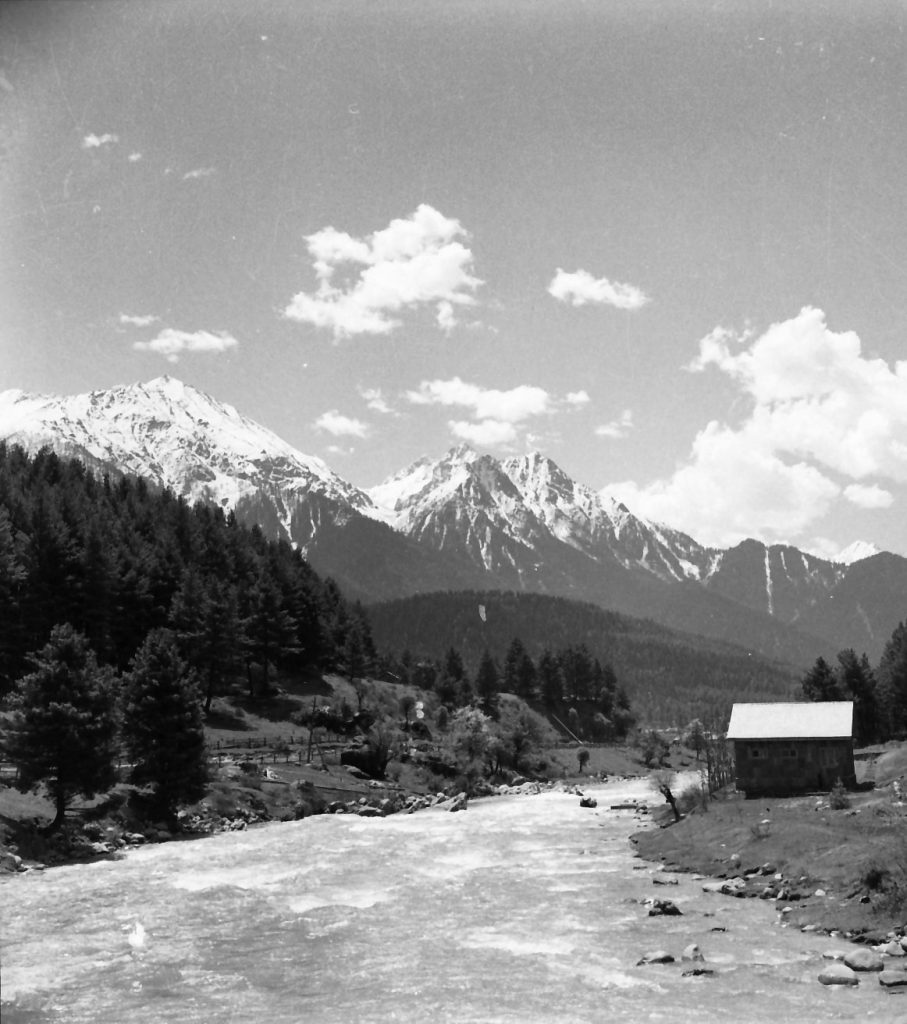 People of Gurez valley are quite different from the Kashmiris as they are mostly Dards They speak a different language (Sheena) and have their ancestral connection with Gilgit valley which is not too far. Though the facial features and clothes; traditions and customs of the Dards are similar to Kashmiri people of mountain region. Though Gurez is a far-flung area, the people of the Dard race are very hardworking. Dardi women are fair and very beautiful, who spend the summer in collecting wood from mountains for the harsh winter; when it snows throughout. This hinders the visit to the valley for at least 4–6 months of the year.
People of Gurez valley are quite different from the Kashmiris as they are mostly Dards They speak a different language (Sheena) and have their ancestral connection with Gilgit valley which is not too far. Though the facial features and clothes; traditions and customs of the Dards are similar to Kashmiri people of mountain region. Though Gurez is a far-flung area, the people of the Dard race are very hardworking. Dardi women are fair and very beautiful, who spend the summer in collecting wood from mountains for the harsh winter; when it snows throughout. This hinders the visit to the valley for at least 4–6 months of the year.
The trekking routes from Gurez and Tilel lead upto Gangabal and Sonamarg to its east, and Drass, Dahanu and Zanskar to its north.
Dawar is the administrative village where you can find a semblance of some shops and a few small guest houses. What is lacking is more than made up by the friendly people. 20 km from Gurez, the awesome village of Tilel have log wood houses which perfectly add to the magnificent view of pine tree lined mountains. The road from Gurez to Tilel is being extended upto Drass in Kargil region and that should really bring in more accessibility and connectivity.
NARANAG AND THE HIGH ALTITUDE LAKES
Naranag is one of the lesser visited places that lies to the north Kashmir travel of Srinagar, some 50 kms from it. Naranag is one of the best places, in fact base for trekking or walking in the mountains. If you are not keen to trek – a two night’s camp at the beautiful Gangabal Lake side with walks on the Alpine flower carpeted meadows is just what the doctor ordered.
Naranag temple ruins show that it is a 14th century old Shiva temple. At the base are the remains of ancient temples built with large granite blocks. The architecture styles of these ancient temples were inspired by both foreign elements as well as indigenous temple architectural styles. Some of the important temples of Kashmir are found in places like Martand, Avantipur, Pattan, Buniar, Pandrethan and Payar. Most of the temples in these places show a distinct architectural style found only in Kashmir. It is believed that Kashmir was once the seat of learning and scholars from India as well as neighboring countries came to Kashmir in pursuits of higher learning. Over the centuries, Kashmir not only gained a reputation of being the center of Vedic studies, but was also an equal seat of Buddhist learning. In fact, Kashmir being located strategically on one of the arteries of the ancient Silk Road, scholars from various parts of the world visited it regularly.
Just a 4–5 hours walk from the temple complex, you arrive at one of the most beautiful places in Kashmir – the glacier fed Gangabal lake side. A camp here will not only invigorate you but also the clean mountain air is the best detox one can expect. There is a stream that flows besides the temple monuments, fed by glaciers and the Gangabal Lake (3575 metres) at the base of Mt. Harmukh situated high up in the mountains. The mountains are uninhabited, except the local tribes called Gujjars who take their cattle to graze on the terraces. In July and August a carpet of flowers greets you. Brown and Rainbow trout is in abundance in the lake and makes it an ideal base for a 2 or 3 night’s camp. Daily walks to the nearby Nundkhol, Vishensar and Kishensar lakes will give you a treasure of memories you will cherish for your life.
ARU & LIDDERWAT
Another fantastic area for an invigorating 3 day camping / hiking trip is the Aru and Lidderwat area of upper Pahalgam. Just a 45 mins drive from Pahalgam brings one to Aru – a beautiful village along the banks of the Lidder River. You can stay in Aru in one of the small hotels. However, it is highly recommended to take the 3 hour trek through thick forest to Lidderwat. As we move higher we find the plants of Red Clover and Dactyls growing on the sides of the path. Lidderwat is widely known for the beautiful view of the forests of maple and pine trees. The magnificent panoramic views of the hills all around will win anyone’s heart. Lidderwat valley is a nice place for camping out and since this place is surrounded by trees and natural wonders, it doesn’t fail to make a good atmosphere for someone to spend the night under canvas. This is an adventure filled experience along with an opportunity to witness the real beauty of nature. This expedition is not one to miss out on. The valley/ plateau is encircled by fast flowing steams from the Kolahoi glacier on the one hand, and from the twin lakes of Tarsar and Marsar on the other. The camp site is stunning and with a camp fire in the night you can make your own barbeque. During the day one can walk to the Kolahoi Glacier base and the twin lakes – however I personally suggest that you just stay put at your campsite, laze around and just soak in the beauty of the area. Local Gujjars are very friendly and they are willing to share their excellent local cheese ‘Kalaari’ and in a rare case a chicken or lamb to make an awesome barbeque.
YUSMARG, CHARAR-E-SHARIEF & TOSAMAIDAN
Yusmarg is approximately 47 km from the Srinagar and lies in the Badgam district of Jammu and Kashmir. The two-hour drive to the place is a joy in itself. Grassy pastures stretching to acres of land, the dense forests full of pine trees, with the backdrop of splendid snow-capped mountains leave you speechless. Within commutable distance from Srinagar, Yusmarg is the perfect place to go for a day long picnic. It is possible that after reaching this place, you may want to even stay for a few days. Especially for the lovers of long walks in picturesque locales, Yusmarg is the place to be. You may also enjoy a laid-back stroll amongst flower-strewn meadows.
Another venue for the walkers is a river, known by the name of Dudh Ganga. Frothing and crashing on its way over the rocks, the river makes a little white foam, which gives it this name. A little ahead, is a lake – Nilnag, embraced with hills. Yusmarg mesmerizes tourists with its scenic meadows,a sparkling reservoir and mountains comparable to European Alps. The word ‘Yus’ is said to be a short form of Youza or Jesus PBUH and a marg means a meadow, according to a belief the Jesus is said to have passed through this valley while travelling into Kashmir.
A major trekking route from Yusmarg leads to a famous spot called Tosa Maidan, a large meadow used for cattle grazing by nomads. This area is connected through rough routes to places like Gulmarg and Poonch. The region is full of springs, with the one at Khag is most famous for the curative properties. The natural slopes of Yusmarg offer skiing opportunities to experts. Hiking and trekkers lovers make take a week or so stay at Yusmarg / Tosamaidan for the thrilling trekking routes around.
Yousmarg is suitable for young couples, as it is quietest place out of all tourist destinations. Last few years of large tourist inflow into Kashmir valley has seen the diversification of tourism to this wonderful destination.
A short trek of 4km to Nilnag – a small lake amidst pine trees, near a hamlet gives an ultimate pleasure to hikers. A full day trek from Yusmarg to the frozen lake in Sang e safed valley is most rewarding as a portion of the lake is covered under ice throughout the year.
At a distance of about 13 km from Yusmarg in the Kashmir valley is the Charar-e-Sharief, the shrine of the saint Sheikh Noor-ud-din or Nund Reshi. Nund Reshi was the patron of the Sufism in Kashmir who showed disinterest in worldly matters from childhood and renounced the world at an early age of 12 in search of divinity of God. He was an illiterate Shiekh Noor-ud-Din Noorani RA popular as Nund Reshi or Alamdar-e- Kashmir was born in 1378 AD. People from all walks of life and religions pay their respects at this beautiful shine. First built more than five centuries ago, the shrine was a monument to the secularism and tolerance of Sufism, the bedrock of Kashmiriyat.





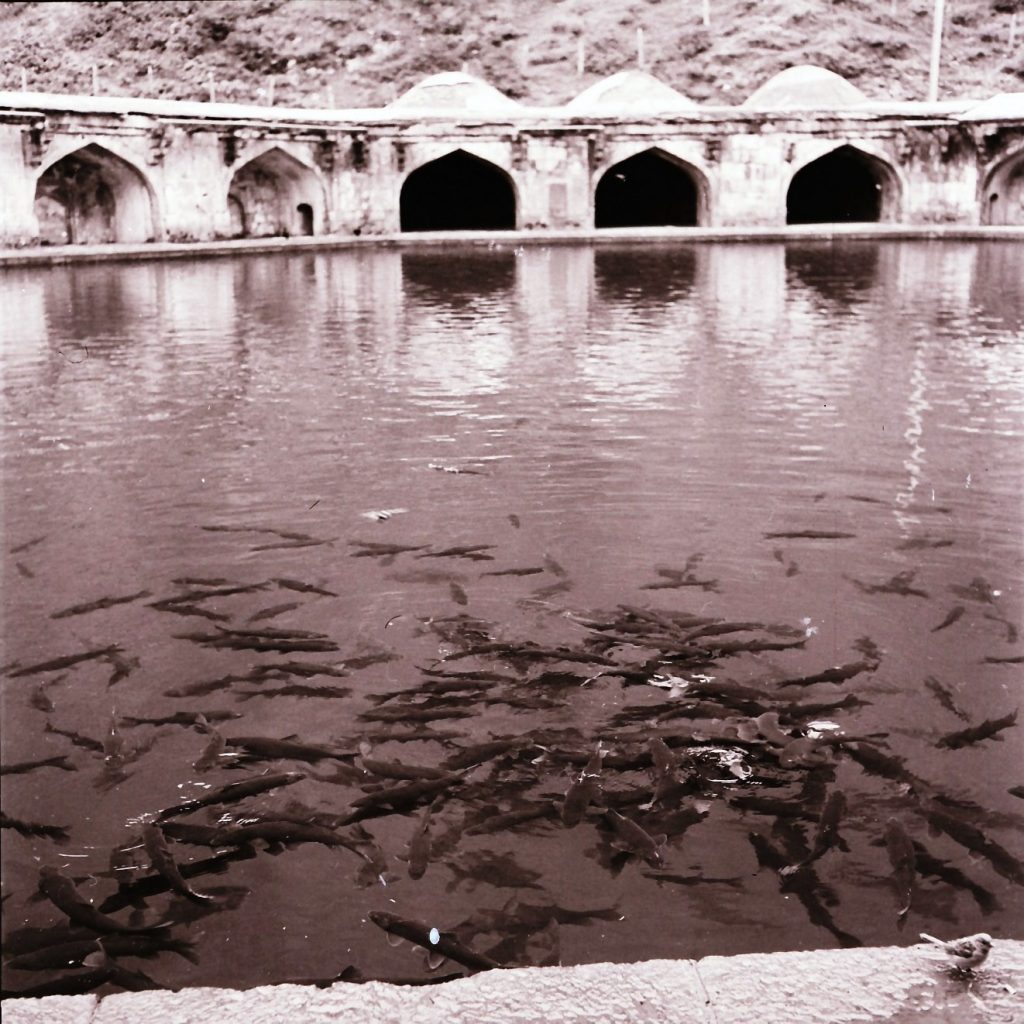
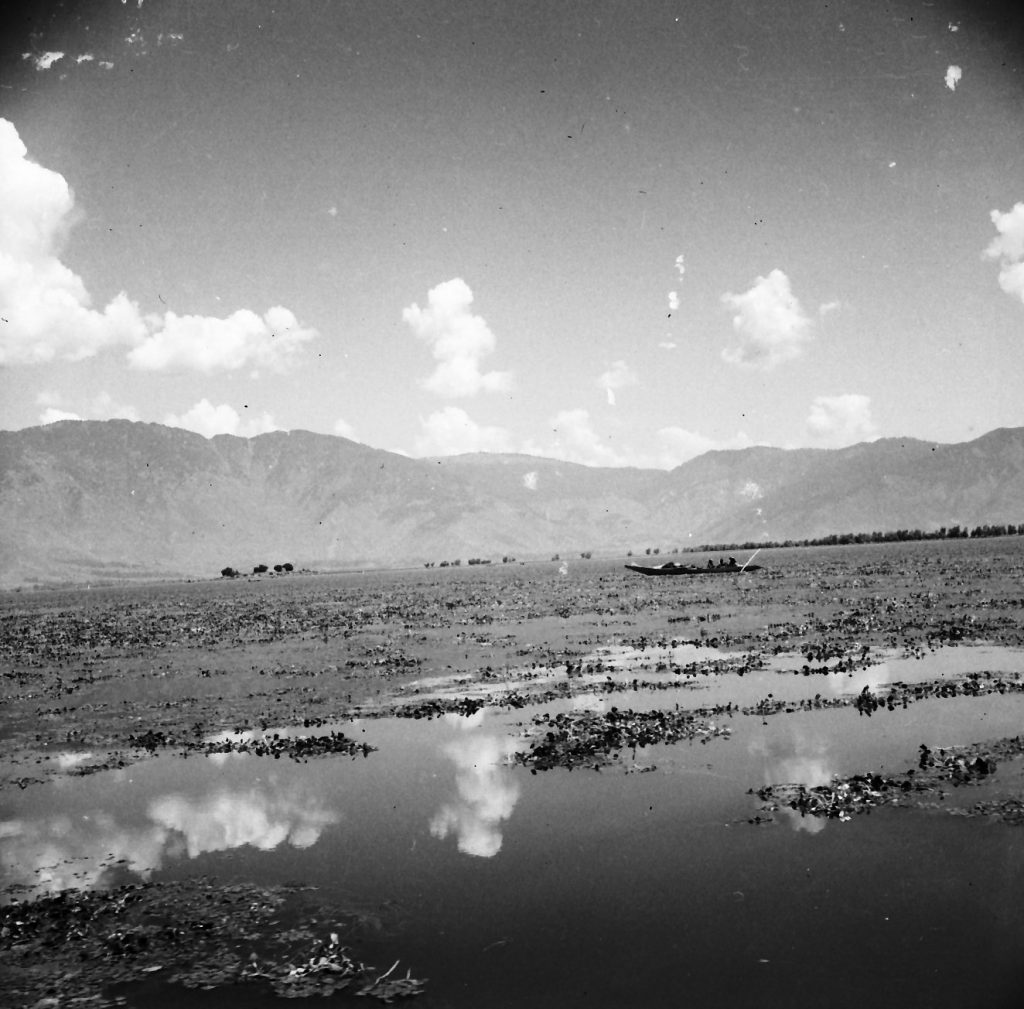


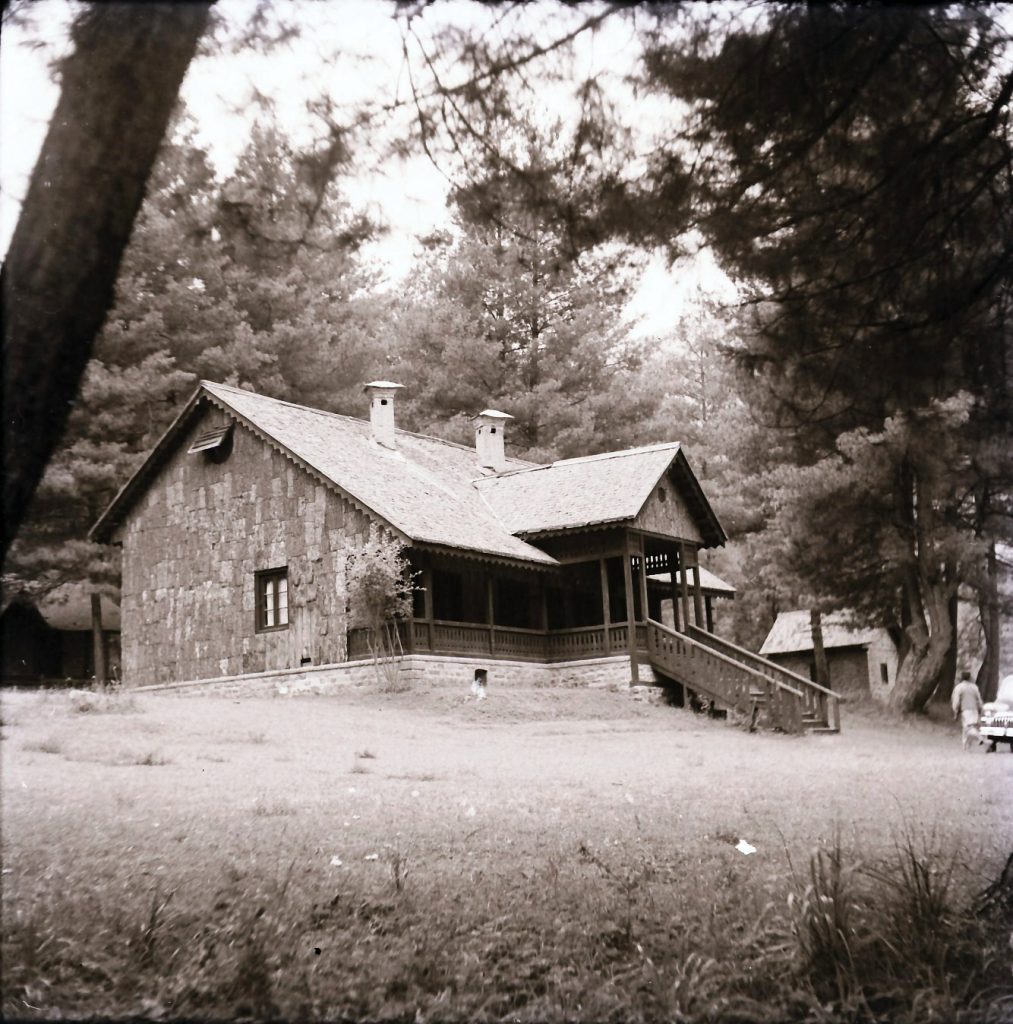






Thanks for letting readers like me, several less-known and unknown facts about tourist spots in the Pristine Kashmir valley.
Comments are closed.